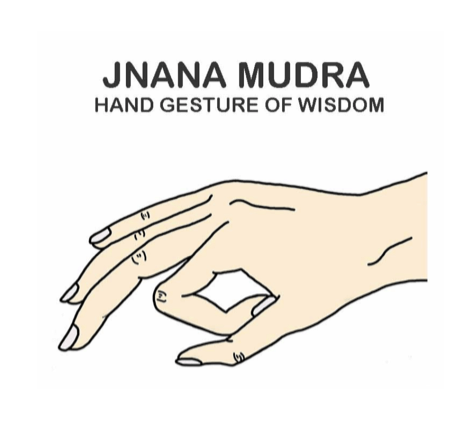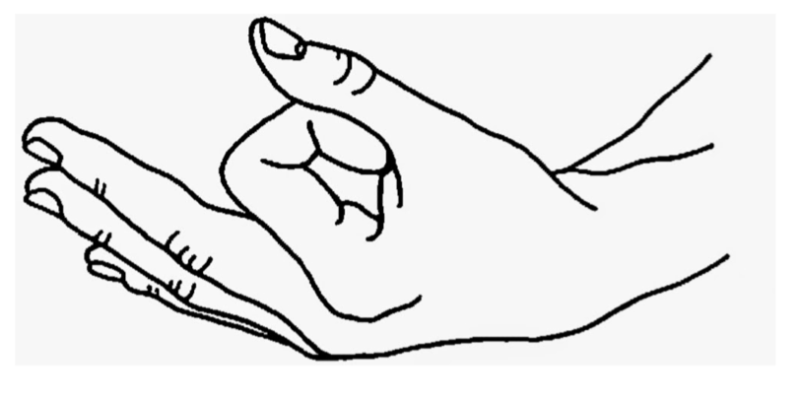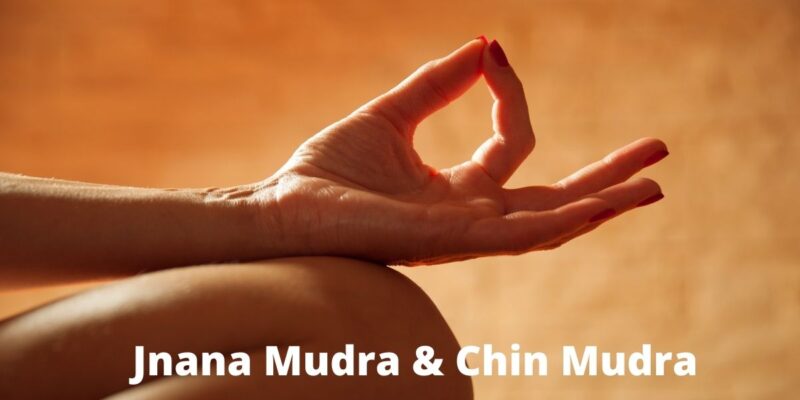Jnana Mudra & Chin Mudra
Background Jnana Mudra & Chin Mudra
The word jnana means ‘wisdom’ or ‘knowledge’, and thus jnana mudra is the gesture of intuitive knowledge.
Chin, on the other hand, is derived from the word chit or chitta, which means ‘consciousness’.
Chin mudra, therefore, is the psychic gesture of consciousness.
Both are referred to as Gyan Mudra or Dhyana Mudra as well.
Symbolically, the small, ring and middle fingers represent the three gunas or qualities of nature: tamas, stability; rajas, activity and creativity; and sattwa, luminosity and harmony.
In order for consciousness to pass from ignorance to knowledge, these three states must be transcended.
The index finger represents individual consciousness, the jivatma, while the thumb symbolizes supreme consciousness.
In jnana and chin mudras the individual (index finger) is bowing down to the supreme consciousness (the thumb), acknowledging its unsurpassed power.
The index finger, however, is touching the thumb, symbolizing the ultimate unity of the two experiences and the culmination of yoga.
Benefits:
Jnana mudra and chin mudra are simple but important psycho-neural finger locks which make meditation asanas more powerful.
The palms and fingers of the hands have many nerve root endings which constantly emit energy.
When the index finger touches the thumb, a circuit is produced which allows the energy that would normally dissipate into the environment to travel back through the body and up to the brain.
When the fingers and hands are placed on the knees, the knees are sensitized, creating another pranic circuit that maintains and redirects prana within the body.
In addition, placing the hands on the knees stimulates a nadi which runs from the knees, up the inside of the thighs and into the perineum. This nadi is known as gupta or the hidden nadi.
Sensitizing this channel helps to stimulate the energies at mooladhara chakra.
When the palms face upward in chin mudra, the chest area is opened up.
You may experience this as a sense of lightness and receptivity, which is absent in the practice of jnana mudra.
- These mudras help to cure insomnia, increase energy and stamina.
- Improve concentration and memory power.
- Regular practice of these mudras can eliminate all psychological disorders like anger, depression, stress and anxiety.
- Help to connect you to the inner self.
- Relax your mind and brighten the overall mood.
Jnana Mudra (psychic gesture of knowledge)
 How to do the Jnana Mudra
How to do the Jnana Mudra
- Take a comfortable meditation posture.
- The tip of the thumb and index fingers are touching or fold the index fingers so that they touch the inside root of the thumbs
- Straighten the other three fingers of each hand so that they are relaxed and slightly apart.
- Place the hands on the knees with the palms facing down. Relax the hands and arms.
Chin Mudra (psychic gesture of consciousness)
How to do the chin mudra
The chin mudra is performed in the same way as jnana mudra, except that the palms of both hands face upwards, with the backs of the hands resting on the knees. Relax the hands and arms.
One of these two mudras can be used whenever practising meditation.

Variation: Jnana and chin mudras are often performed with the tip of the thumb and index finger touching and forming a circle. Beginners may find this variation less secure for prolonged periods of meditation, as the thumb and index finger tend to separate more easily when body awareness is lost. Otherwise, this variation is as effective as the basic position.
Practice note: The effect of chin or jnana mudras is very subtle and it requires sensitivity to perceive the change in consciousness established. But with practice however, the mind becomes conditioned to the mudra and when it is adopted, the signal to enter a meditative state is transmitted.



